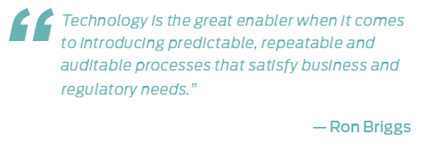In New York, the dubious winner of the nation’s longest average time to foreclose, it took an astounding 1,475 days to complete foreclosure. That’s more than four years. Which is why property preservation companies, despite a lower number of foreclosures overall, are still vital in managing risk for lenders. A lot of things can happen to a property in 1,475 days.
And as the field services industry continues to ride the REO boom and bust cycle, it’s under increasing scrutiny from investors, communities and regulators to deliver top-tier service within strict guidelines. Companies have adapted to this new REO environment by finding innovative ways to do the important work of protecting and maintaining assets.
Investors today crave certainty, the kind that results from lots and lots of data points. To provide that degree of assurance, field service providers have taken data collection to a whole new level. Forget the stereotype of a field servicer walking around with a clipboard and a camera. Just in the last 12 months, the explosion of available real-time data is driving a new model of field servicing that would have been unrecognizable in the past.
For example, last year Safeguard Properties received about 100,000 photos from the field every day — an impressive number. Today, with 94% of its vendor base using mobile to submit information, that number has climbed to more than 1 million photos a day, a 900% increase.
“Mobile has been an unbelievable factor in delivering richer and more timely data,” said Alan Jaffa, CEO of Safeguard Properties. “A lot of our clients get hourly or even more frequent data feeds from us.”
The speed at which servicers can get information from their vendors is a key factor in quality control, Jaffa said.
“Investors today are reviewing property information with a fine-tooth comb. The entire review process has been extended, and investors are not looking to wait for weeks to get that information,” Jaffa said. “Our vendors are under scrutiny to get that information back quickly.”
 With mobile apps, Safeguard vendors are able to share data almost instantly, and pictures and property specifics are reviewed during the same day.
With mobile apps, Safeguard vendors are able to share data almost instantly, and pictures and property specifics are reviewed during the same day.
“There’s so much detail we now provide to our clients. Years ago, having photos of every single bedroom wasn’t as critical, but today it’s not just photos, but smart scripts that ask all the right questions to get the most up-to-date position on the property,” Jaffa said.
That kind of information is an essential ingredient as lenders manage third-party vendors. The Consumer Financial Protection Bureau has made it clear that financial institutions carry all the risk when it comes to what they outsource, and field service providers are keenly aware of their role in compliance.
For Ron Briggs, senior vice president of business development at Aspen Grove Solutions, the only way to comply is by leveraging technology to deliver what investors and regulators are looking for. “Technology is the great enabler when it comes to introducing predictable, repeatable and auditable processes that satisfy business and regulatory needs,” Briggs said.
“We provide our clients with the ability to know who was at a property, when they were at a property, and through the use of a standardized criminal background check, the person’s pattern of past behavior.
“Through the use of our technology, our clients can measure the quality of the vendor’s work, which can lead to additional training so vendors are equipped to do the best possible job. As such, technology, the business, and regulatory needs are aligning to provide line of sight from work assignment to service delivery at the property.”
The rapid transformation into a tech-centric model has shifted the role of the front-line workers in field services. As more people review the files, there is more emphasis on accountability. But the new model benefits these workers as well.
“Our subcontractors used to spend 12 hours in the field, and then spend another four hours rekeying that information,” he said. “Technology has enhanced the way they do business and they love it.”
The evolution of the way properties are secured and maintained comes at the right time for communities that are demanding greater transparency into the process.
“Just to protect and preserve a property may not be enough anymore. How we did that five or 10 years ago looks very different than what we need to do today,” Jaffa said.
“Cities across the country are not interested in hearing who owns the property — the fact that the bank owns it isn’t the issue. The issue is that this property has to be maintained like any other property on the block.”
By maintaining properties to community standards, communities are improved while assets are protected and preserved. It’s a win-win for all parties.






